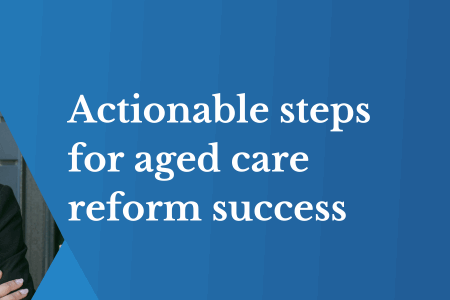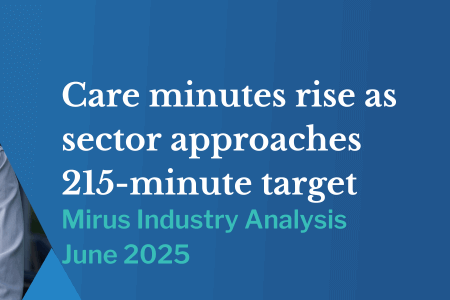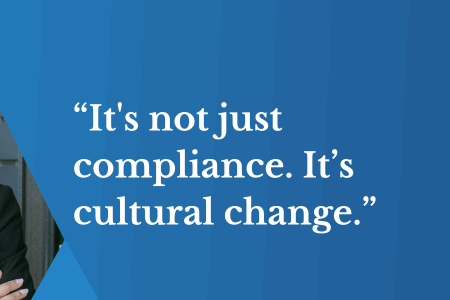Three workflows to help solve the complexities of AN-ACC
October 25, 2023 | Aged Care Management

By Taran Minhas, Senior Consultant
In the Aged Care Funding Instrument (ACFI) world, providers were optimising their funding by identifying changes to care needs of residents and claiming for any uplift found. With no mandated requirement on the workforce (other than allied health), it was a siloed decision commonly made by financial and funding teams. The Australian National Aged Care Classification (AN-ACC) world requires a very different mindset – one that incorporates a solid workforce strategy that is balanced and aligned with funding strategy.
The Royal Commission into Aged Care Quality and Safety recommended introducing a case-mix funding model for residential aged care. This has seen the introduction of care minute allocations for each funding classification and, hence, the need to align funding and workforce strategies. Rather than reviewing residents for a potential uplift in funding only, providers need to consider their rostering capacity and whether this is aligned to their care minute targets and requirements. A lower classification of residents means less care minutes required and lower care minute targets to meet – which in many cases reduces casual and agency staffing expenditure. Managing the balance in the AN-ACC world now requires three (3) key workflows.
1. Forecast AN-ACC classes for pre-admission and current residents to manage care revenue
- Visibility of the admissions pipeline, and resident departures will help plan long-range changes (6-8 weeks) to AN-ACC and care minute requirements. This is the foundation for your modelling.
- Then, undertake an internal funding review of all residents to understand typical claim profile for each facility and where each resident would align today.
- Clinicians with the clinical assessment knowledge of current and pre-admission residents assign forecasted AN-ACC classifications against each resident as they either deteriorate or are re-abled through their care journey at the facility. (This step can now be centralised or even outsourced).
2. Establish consistent Roster Demand Template/s
- To understand the workforce factors affecting the actual direct care minutes required for all residents against the care minute targets.
- Consider stability of roster, types of shifts, direct care time eligibility, and ideal models of care. Stable, well defined master rosters and templates will help the providers plan rosters in line with their care obligations to all residents and maintain compliance.
- Forecast care minute targets ahead of their release by the Department, with new admissions included.
3. Control and understand your data to then strategically request reclassifications
- Continually monitor residents’ changing care needs and accurately forecast future potential classifications (Again, this is a base level, repetitive and non care minute task that could be outsourced).
- Manage the resident claim profile and case mix distribution to offset resident movements while maintaining a case mix that aligns to the workforce strategy. This is the balance providers need to maintain.
These three workflows combined form a continuous process that providers will need to adopt for sustainable and efficient operations over the years to come.
Technology can help
Our technology Mirus Metrics and Mirus Works! are tools that enable users to understand and report business performance regarding AN-ACC subsidy and care minute compliance. Whether the user is responsible for admissions, AN-ACC assessments, rostering or preparing analytical reports for their governing bodies, there are many benefits to using Mirus solutions.
Regular changes to funding, care minute allocations and reporting requirements make it near impossible to have a static set-and-forget mindset for AN-ACC. With so many variables to manage, as well as the usual operational challenges, we’ve invested in solving this maze, working with our clients to help them remain financially sustainable and compliant. Only Mirus can provide the balance required with solutions covering 100% of the AN-ACC and care minutes equation.
- Real-time, transparent reporting – a snapshot on the facility’s performance, including historical tracking of AN-ACC subsidies and supplements, resident classifications and occupancy to quantify improvements or provide early alerts on future revenue impacts.
- Operational efficiency – save time spent in collecting, preparing and reporting management information, thus allowing staff to action insights and refocus to quality and safe care.
We’ve designed a process guide to support the sector’s understanding of how to operate a sustainable and viable aged care organisation in this new context. For more information and access to this guide, reach out to us!


